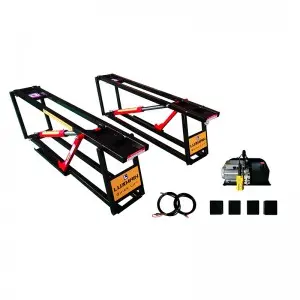**Introduction to AC Series Circuits**
Alternating Current (AC) series circuits are a vital component of modern electrical engineering, playing a significant role in various applications, from household appliances to industrial machinery. Understanding AC series circuits is essential for professionals in the field, as well as for those looking to enhance their knowledge of electricity. This article will delve into the fundamentals of AC series circuits, explore their characteristics, and highlight their practical applications in everyday life.
**What Are AC Series Circuits?**
An AC series circuit is a circuit in which components such as resistors, inductors, and capacitors are connected sequentially, forming a single pathway for current to flow. Unlike direct current (DC), where the current remains constant over time, alternating current changes direction periodically. This oscillation is typically defined by its frequency, measured in hertz (Hz), and voltage, which can also vary sinusoidally.
**Components of AC Series Circuits**
1. **Resistors**: Resistors are components that oppose the flow of electric current. In an AC series circuit, they convert electrical energy into heat, resulting in power loss, which is an important consideration in circuit design.
2. **Inductors**: Inductors are devices that store energy in a magnetic field when electric current passes through them. They introduce inductive reactance in an AC series circuit, which causes the current to lag behind the voltage.
3. **Capacitors**: Capacitors are components that store electrical energy in an electric field. In AC circuits, they introduce capacitive reactance, causing the current to lead the voltage.

Understanding the Fundamentals and Applications of AC Series Circuits in Electrical Engineering and Everyday Life
**Impedance in AC Series Circuits**
In AC series circuits, the total opposition to the flow of current is referred to as impedance (Z), which combines resistance (R) and reactance (X). Reactance, influenced by both inductors and capacitors, can be either inductive or capacitive:
– **Inductive Reactance (XL)**: Given by the formula XL = 2πfL, where f is the frequency and L is the inductance.
– **Capacitive Reactance (XC)**: Given by the formula XC = 1/(2πfC), where C is capacitance.
The overall impedance can be expressed using the formula:
\[Z = \sqrt{R^2 + (XL – XC)^2}\]

Understanding the Fundamentals and Applications of AC Series Circuits in Electrical Engineering and Everyday Life
This formula is fundamental for calculating the behavior of AC series circuits since it helps determine how much current will flow through the circuit for a given voltage.
**Phasors and Waveforms in AC Circuits**
Phasors are a graphical representation used to simplify AC circuit analysis. They represent the magnitude and phase angle of sinusoidal voltages and currents. By converting time-varying waveforms into phasors, electrical engineers can use algebraic methods to solve circuit problems instead of dealing with complex differential equations.
The phase angle is particularly important in AC series circuits because it affects the timing between the current and voltage. Depending on the predominance of either reactance—inductive or capacitive—the phase angle can either lag (inductive) or lead (capacitive) the waveforms.
**Applications of AC Series Circuits**
1. **Household Appliances**: Common appliances like refrigerators, washing machines, and air conditioners utilize AC series circuits. The design considerations—such as impedance matching and power factor correction—are crucial for energy efficiency.
2. **Lighting Systems**: Many lighting systems, particularly those using fluorescent or incandescent bulbs, utilize AC series circuits. Transformers and ballasts are often incorporated into these designs to manage voltage and current levels.
3. **Motor Drives**: AC motors, widely employed in industrial settings, rely on AC series circuits for operation. Understanding impedance is vital for optimizing motor performance and longevity.
4. **Audio Equipment**: Amplifiers and audio systems often employ AC series circuits. Impedance matching techniques ensure maximum power transfer and enhance sound quality.
**Conclusion**

Understanding the Fundamentals and Applications of AC Series Circuits in Electrical Engineering and Everyday Life
In summary, AC series circuits are fundamental to understanding the operation of electrical systems in both industrial and residential contexts. Their unique characteristics, including impedance, phasor representation, and the use of key components like resistors, inductors, and capacitors, make them essential for a variety of applications. Electrical engineers and technicians must grasp these concepts to design efficient circuits that meet the demands of modern technology. Whether in household conveniences or advanced industrial machinery, AC series circuits play a critical role in the efficient functioning of electrical systems.k Lift Accessories



